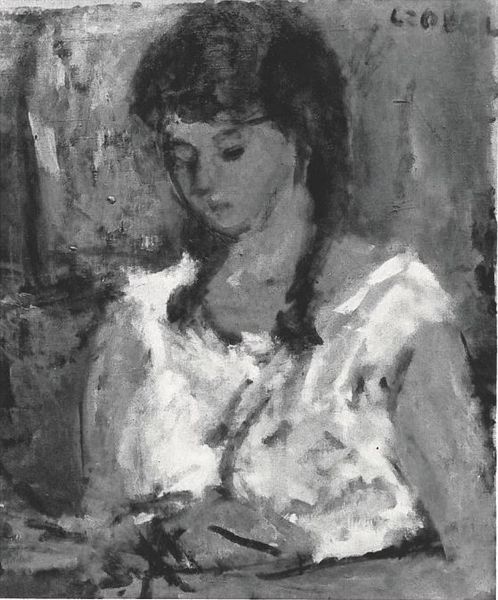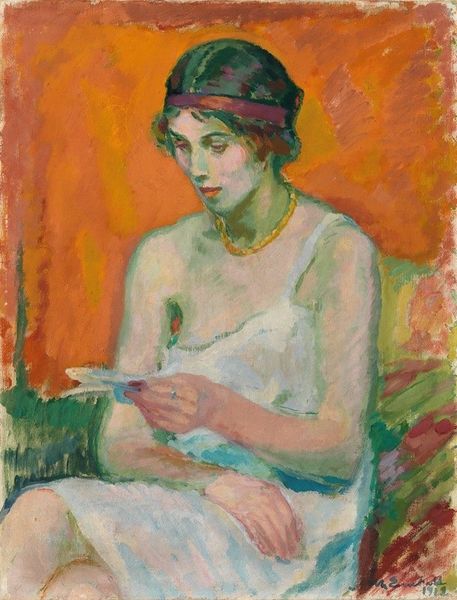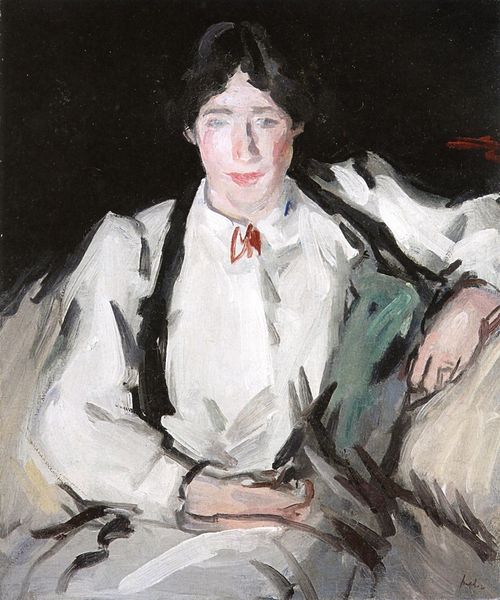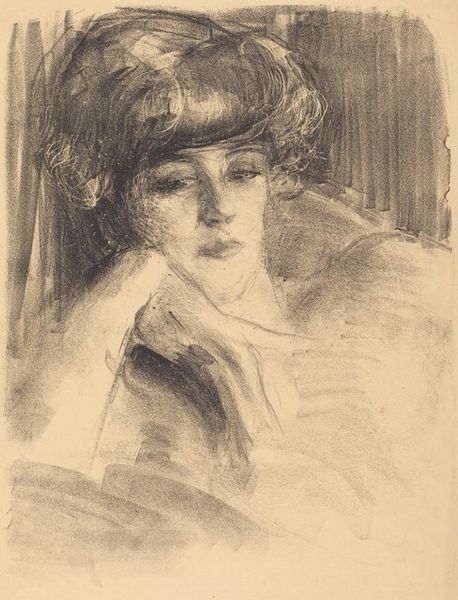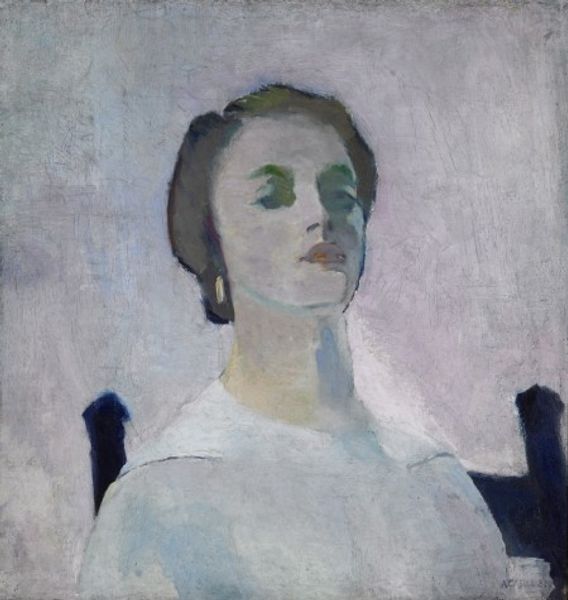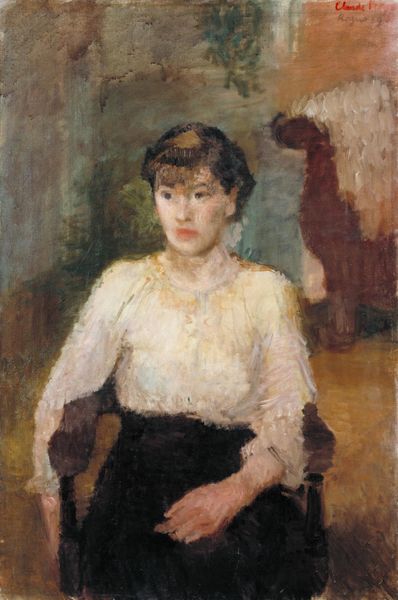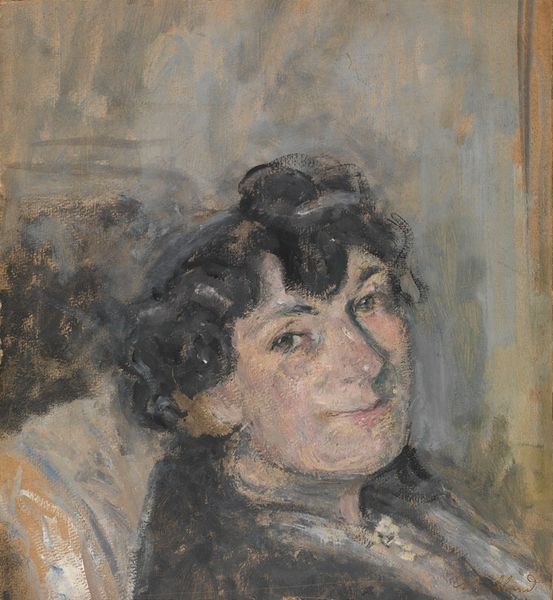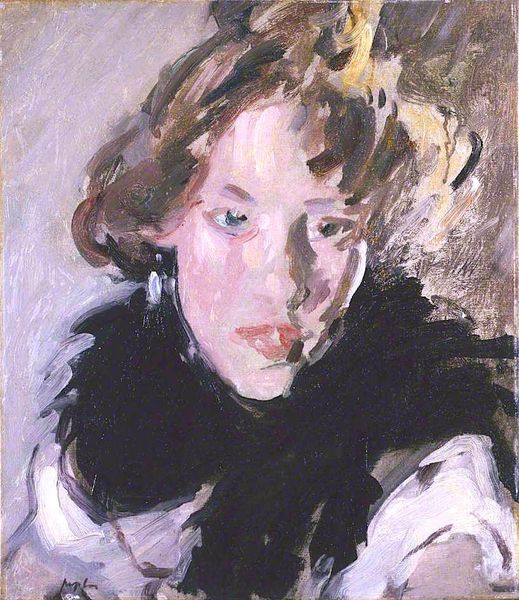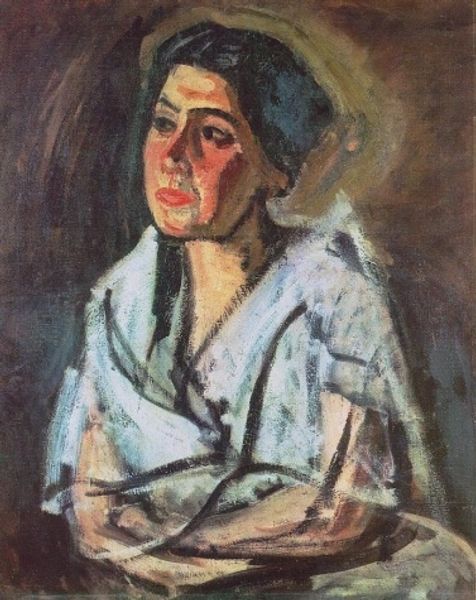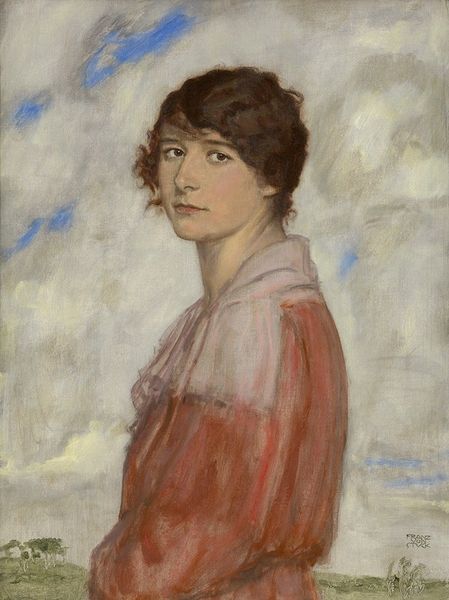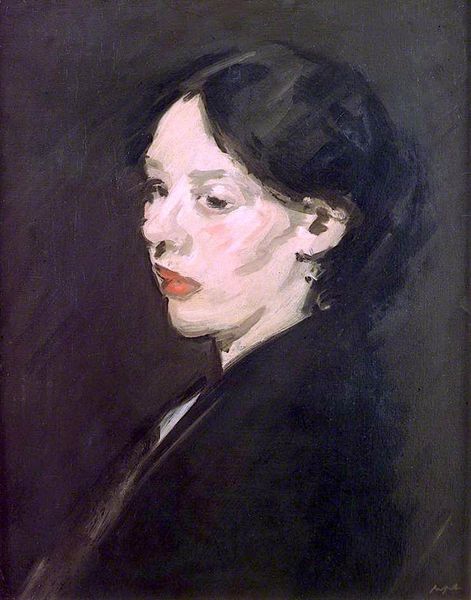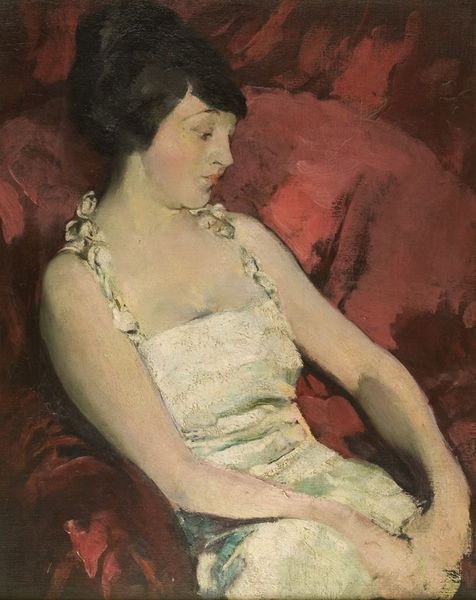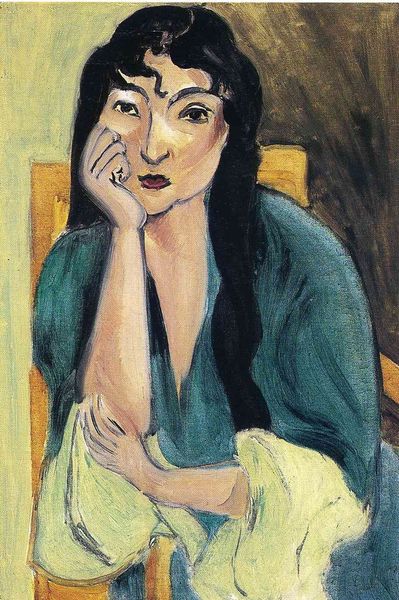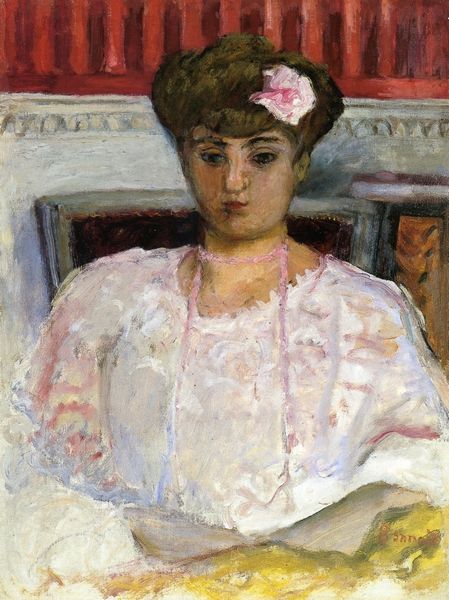
Copyright: Public domain
Curator: Upon viewing Samuel Peploe’s "Head of a Girl" from 1922, one is immediately struck by a mood of serene introspection. The composition is so very calming, isn't it? Editor: It’s definitely evocative, but I immediately read a certain confinement, maybe even repression, in the downturned gaze and simplified form. How much did gender roles and expectations of women constrain self-expression in the 1920s? It is not as carefree as I initially would think of art nouveau. Curator: Indeed, it offers us a clear reference to Peploe’s processes. The thick applications of oil paint show us the materiality directly. Look at how those broad strokes create the simple lines of her dress, which speaks volumes. Editor: It's also impossible to ignore how Peploe, like many of his contemporaries, engaged with a very specific, largely bourgeois, view of femininity and beauty. Who were the consumers of art in the early 20th century, and what were their expectations of such portrayals? What kind of lives were they expecting for their daughters? Curator: Good point. The almost palpable texture invites us to think about production – from sourcing pigments to Peploe’s specific artistic choices and brushwork. Consider too the broader network of suppliers and galleries that facilitated the distribution and consumption of artworks like this. Editor: And while Peploe captures a certain ideal of beauty, there’s a flattening of affect too, right? What does it tell us about power dynamics between artist and sitter, or about the way women were seen? We are getting at much deeper subjects now. Curator: Absolutely, those observations deepen our interpretation. Editor: By bringing historical, social and production analysis together, we move closer to an understanding that this lovely painting reflects much more than initially thought.
Comments
No comments
Be the first to comment and join the conversation on the ultimate creative platform.
